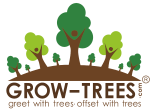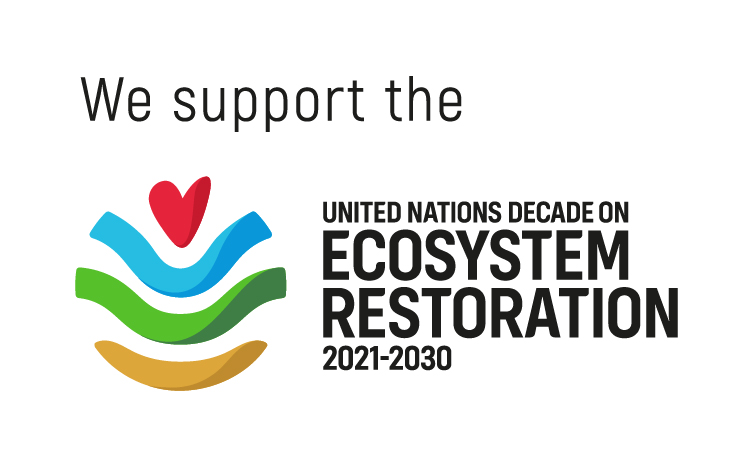Trees for Tribals®
Shahbad, Baran District, Rajasthan, India
Available for Adoption upto: 20,000 Trees
Project Purpose
Trees for Tribals®Location

In FY 2025-26, we will plant 20,000 trees in this project. It will be implemented in community land in Mungavali village, Shubhaghara gram panchayat, Shahbad tehsil, and Baran district of Rajasthan.

Groundwater
Recharge

Increase in
Green Cover

Providing Fodder
for Livestock

Generation of
Rural Employment

Conservation of
Water Table






About Sahariya Tribes of Rajasthan
Rajasthan, is home to a significant tribal population, predominantly from the Sahariya community. According to the 2011 Census, Scheduled Tribes constitute approximately 30.89% of Mungawali's population. [1] Sahariya, recognized as a Particularly Vulnerable Tribal Group (PVTG), are primarily concentrated in the Shahbad and Kishanganj tehsils of Baran district. A majority (93%) of the Saharia population is inhabiting the Kishanganj and Shahbad blocks of Baran district. [2] Indigenous to the Baran district, the Sahariyas live in distinct village clusters known as Seharanas, with houses constructed from stone slabs (Patore) or mud. Economically, they rely on forest produce, agriculture, and wage labour, and are especially skilled in extracting catechu, a tanning extract, from khair trees. They are skilled woodsmen and forest gatherers, primarily engaged in collecting and selling wood, gum, tendu leaves, honey, mahua, and medicinal herbs. Their traditional occupations also include basket-making, mining, quarrying, stone breaking, hunting, and fishing. [3]

Why trees?
Rajasthan grapples with significant environmental and socio-economic challenges, exacerbated by its predominantly arid and semi-arid climate. Frequent droughts, extreme temperatures, and limited water resources have made the state highly vulnerable to desertification and land degradation. According to Mongabay-India (2024), environmental degradation and deforestation have significantly disrupted the Sahariya tribe’s reliance on forest resources, leading to adverse effects on their health, livelihoods, and cultural practices. [4] The depletion of forest cover has not only curtailed access to non-timber forest products (NFTPs) but has also triggered a significant shift in the livelihood patterns of tribal households in Mungavali.[10] Such changes have led to increased poverty and adverse health outcomes among the community members. [5]
According to the study titled Nutritional Status of Saharia – A Primitive Tribe of Rajasthan, the Sahariyas face some of the worst socio-economic indicators among PVTGs. [6]A staggering 81% of male household heads and 96% of females are illiterate, indicating limited access to education within the community.[7] Only 42% of households own land, and 82% of household heads depend on agriculture or labour for their livelihoods, reflecting significant economic vulnerability. Moreover, 72% of children aged 1-5 years are undernourished, highlighting severe malnutrition within the community.[8] These challenges have pushed the community into a vicious cycle of poverty and food insecurity. [2]
Scientific evidence shows that trees significantly contribute to climate mitigation, soil health, and community resilience:
- Soil erosion reduction: Tree roots bind the soil, preventing surface runoff. According to a study published in Ecological Engineering, afforestation on degraded land can reduce soil erosion by up to 65% (Pan et al., 2011).
- Water retention and aquifer recharge: Forests act as sponges. A study by the International Water Management Institute confirms that tree cover enhances groundwater recharge, especially in seasonal river basins like the one near Mungavali.
- Carbon sequestration: According to the IPCC, mature tropical trees sequester between 100 to 150 kg of CO₂ per year. With 20,000 trees, the cumulative sequestration potential exceeds 2,000 tonnes of CO₂ over a decade.
- Biodiversity and pollination: Trees restore ecosystems, enabling the return of birds and pollinators critical to agriculture. Studies by the Food and Agriculture Organization (FAO) suggest that forest restoration in tribal lands can increase agricultural yield by up to 15% through enhanced pollination and microclimate improvements.
These findings are particularly relevant for the implementation of the "Trees for Tribals®" project initiative in Mungavali. Through this initiative, we aim to help alleviate these challenges and significantly enhance the overall well-being of the community.
Tree Species:
These tree species have been carefully selected to provide both ecological restoration and sustainable livelihood options for tribal communities.
1. Amla/Gooseberry (Emblica officinalis)
Amla is a hardy tree that thrives in a variety of soils and is drought-tolerant. It helps in preventing soil erosion and improves soil fertility. The tree's deep roots enhance water retention in the soil. It is a highly valued fruit in the market, especially for its use in medicinal products, jams, and beverages. The tree also has a high potential for agroforestry and offers significant income to local communities. Amla is considered sacred in many tribal traditions and is often used in Ayurvedic treatments.
2. Sagwan/Teak (Tectona grandis)
Teak trees are known for their large, sturdy growth, which helps in maintaining soil integrity. Their extensive root systems prevent soil erosion and improve soil structure over time. It is a valuable hardwood that is used in construction, furniture, and shipbuilding. The tree can provide long-term income for tribal communities through timber and wood products.
3. Amrood/Guava (Psidium guajava)
Guava trees provide excellent shade and contribute to the restoration of degraded lands. Their roots help in improving soil structure and reducing soil erosion. Guava fruits are highly nutritious and popular for local consumption. Guava farming provides a steady source of income for tribal communities through direct fruit sales and processing. It is often associated with local festivals and celebrations.
4. Shisham/Sissoo (Dalbergia sissoo)
Sissoo is a fast-growing tree that helps in soil conservation and water retention. It also provides shade and is effective in stabilizing riverbanks and preventing soil erosion. Shisham wood is highly prized for its strength and is used in making furniture, cabinetry, and construction materials. The tree also serves as a source of livelihood for local communities through timber and resin collection. The wood of Shisham is significant in many tribal cultures for creating artifacts, tools, and in certain rituals.
5. Khair/Kattha (Acacia catechu)
Khair is known for its ability to grow in poor, dry soils and is beneficial for improving soil health. The tree’s deep roots help in preventing soil erosion and enhancing water retention. Khair is commercially valuable for its bark, which is used to make the popular “kattha” (tannin), used in betel leaf preparation and as a natural dye. The tree also provides fuelwood and timber. In many tribal communities, Khair is used in medicinal practices and is considered important for traditional healing.
Social impacts:
The "Trees for Tribals®" project offers profound social benefits for the Sahariya tribe who face challenges such as illiteracy, malnutrition, and the erosion of traditional livelihoods due to environmental degradation. This project will create multiple employment opportunities for Tribal communities, particularly in areas like seed collection, seed processing, seed treatment, sowing, watering, weeding, pit digging, planting and maintenance of saplings post plantation. This employment not only supports the livelihoods of local people but also contributes to skill development in forest management and agriculture-based activities. By restoring forest ecosystems through the planting of significant trees the project helps revive the community’s deep connection with nature, reinforcing cultural identity and traditional knowledge. Trees not only provide shade and improve local microclimates but also restore access to non-timber forest products (NTFPs) that have long been a vital part of Sahariya customs, rituals, and daily sustenance. With increased access to natural resources, the project improves food security, and enables tribal families especially women and children to lead healthier, more dignified lives.
Ecological & Agricultural Benefits
The rapid loss of natural habitats due to human activities and environmental degradation has placed many bird species at risk. By reintroducing native tree plantations, the project restores critical bird habitats, safeguarding biodiversity and reinforcing the role birds play in pollination, a process vital for agricultural productivity. The selected tree species also boost crop yields in surrounding farmlands. Through improved microclimatic conditions such as shade provision, reduced soil erosion, and enhanced pollination these trees act as natural allies for farmers, increasing productivity and ensuring long-term food security for tribal communities.
Economic Impact
Economically, this project tackles the Sahariya community’s reliance on precarious livelihoods such as marginal farming and irregular wage labor by introducing sustainable and diversified income sources. The strategic selection of high-value, drought-resistant species like Teak, Shisham, and Khair not only aids ecological recovery but also unlocks long-term economic potential through timber, fruit sales, and medicinal products. For example, Khair bark is used in kattha (a tannin extract), creating opportunities for local processing and trade. In the long term, this project seeks to support the Sahariyas in moving from subsistence-based livelihoods to more stable and sustainable means of income, while preserving and valuing their traditions and culture.
References-
[1]https://www.censusindia2011.com/rajasthan/baran/shahbad/mungawali-population.html
[2]https://www.researchgate.net/publication/265874027_Nutritional_Status_of_Saharia_-_A_Primitive_Tribe_of_Rajasthan
[3]https://en.wikipedia.org/wiki/Saharia
[4]https://india.mongabay.com/2024/02/forest-dwellers-struggle-amid-depleting-forest-resources
[5] https://core.ac.uk/download/226141692.pdf
[5] Food and Agriculture Organization (FAO). (2020). The role of forests and trees in improving rural livelihoods. FAO Website
[6] Jones, D., et al. (2021). Afforestation and its impacts on bird biodiversity in degraded ecosystems. Journal of Environmental Management, 271, 110961.
[7] Poudel, K., et al. (2017). Non-timber forest products and rural livelihoods: A case study of Nepal. Forest Policy and Economics, 83, 1-8.
[8] Intergovernmental Panel on Climate Change (IPCC). (2021). Climate Change 2021: The Physical Science Basis. IPCC Website
[9] Zhang, L., et al. (2020). Impact of afforestation on soil quality and water retention: A global analysis. Environmental Research Letters, 15(8), 084001.
[10] Bhagwat, S., et al. (2019). The role of tree cover in enhancing agricultural productivity: A study in India. Agriculture, Ecosystems & Environment, 281, 163-171.









